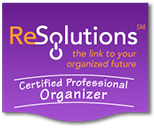
Are you transitioning to working from home due to the outbreak of COVID-19 (Coronavirus)? For most of the population, this is a new concept as workers typically commute to their places of employment. It can be advantageous to work from home as there is no commute or any of the hassles of leaving the house. However, there are plenty of distractions in your home that you need to be aware of in order to truly be productive.
Technology – If meetings are being held virtually, do you have all the apps needed to attend remote meetings? The most popular ways to connect with people are FaceTime, Skype, Google Hangouts, and Zoom. If your employer isn’t helping you navigate any new app, head over to YouTube to get a tutorial. Connect with a co-worker if you need help.
Be Present – Just because you are home doesn’t mean it’s a free day. You will need to be present and available and not wander off to do the laundry or clean the bathroom. I am sure your employer expects you to be around and respond in a timely fashion and to do your job. This will require some discipline on your part to separate yourself from your day to day life activities when you are home vs. actually working from home.
Schedule – Make a schedule and stick to it. Using timers may help you stay on track and then allow a coffee break (again set the timer) and get back to work. Stick to your regular routine in terms of waking as if you were leaving the house, shower, get dressed (you don’t want to get caught in your PJs if you have to jump on a video meeting), and “commute” down to your computer to start your day. End your day as if you were in the office by walking away from your computer and work tasks. For some of you, it may be tempting to continue working while you are in the swing of it. Don’t do it. You don’t want work burnout to occur.
Breaks – Since you may be alone in your house while working you may crave socialization. Schedule a time to talk to a coworker as if you were just walking down to his office to chat and stretch your legs. Be mindful of getting up every hour to force yourself to look away from your computer and not get stiff and sore. Do take a lunch break; just alert others of a specified timeframe if you are supposed to always be available. Communication is key in a remote work environment.
I have addressed the how to’s of working at home in an earlier blog. Please check that blog out to gain more tips on managing your remote work life.
For the most up to date information on COVID-19, look to experts such as the Centers for Disease Control (CDC) and the World Health Organization (WHO)
Photo: Pixabay

 Join My Email List
Join My Email List